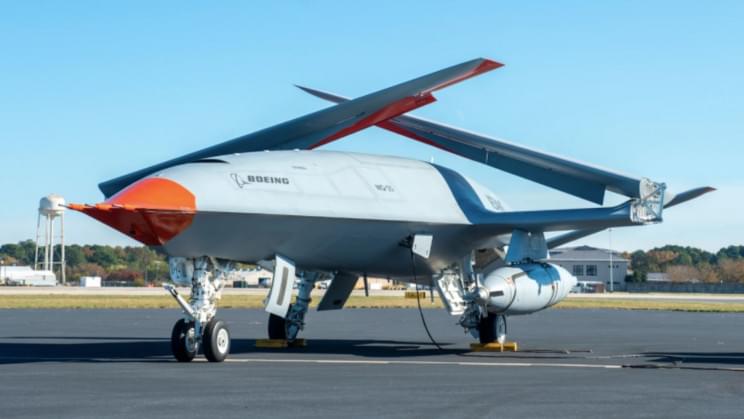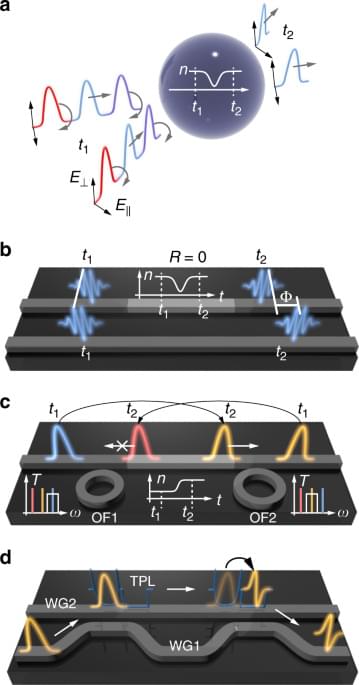The variant’s emergence in South Africa has driven a sharp increase in hospitalizations in Gauteng province during the past two weeks, although fewer patients than in previous surges are being treated for severe disease.


Kind of starts out with a no but ends in a yes. Just a few minutes long.
An increasing number of studies suggest the presence of a “metabolic clock” that controls aging. This clock involves the accumulation of metabolic alterations and a decline in metabolic homeostasis and biological fitness. There are nine cellular hallmarks of aging: telomere attrition, genomic instability, mitochondrial dysfunction, cellular senescence, stem cell exhaustion, loss of proteostasis, deregulated nutrient sensing, epigenetic alterations, and altered intercellular communication. Metabolic alterations have been implicated in each of these processes.
https://www.cell.com/fulltext/S0092-8674(13)00645-4
https://www.cell.com/cell/pdf/S0092-8674(16)30981-3.pdf.
David Sinclair is a professor in the Department of Genetics and co-director of the Paul F. Glenn Center for the Biology of Aging at Harvard Medical School, where he and his colleagues study sirtuins—protein-modifying enzymes that respond to changing NAD+ levels and to caloric restriction—as well as chromatin, energy metabolism, mitochondria, learning and memory, neurodegeneration, cancer, and cellular reprogramming.
Dr David Sinclair has suggested that aging is a disease—and that we may soon have the tools to put it into remission—and he has called for greater international attention to the social, economic and political and benefits of a world in which billions of people can live much longer and much healthier lives.

This is what we are experiencing over the next ten years in the near vertical rate of change. We are in these last stages of these changes where we can shape this future into the flowers analogy. The confluence of environmental, social, biological, physical, digital-inspired, technological, quantum-infused, cosmological, creator culture; an endless list. All significantly transforming our lives. We are in the time where creativity, innovation, intuition, imagination, inspiration, purpose, meaning can be driving us.
What we are experiencing forms my top 10 omni wishes for 2022 that will have outsized impact on our lives.
Top Ten Omni Wishes.
Full Story:
I work pro bono daily across communities of more than 100,000 CEOs, investors, authorities/experts/scientists, and thought leaders. From insights gained in this work, I’m providing my top ten omni (multiple sector) wishes for 2022 that will have exponential impact.
Inline with the theme of this article and while writing this article, I’m experimenting with a new A.I. writing tool based upon OpenAI and GPT-3 from Sudowrite.

With the increasing demand for data science approaches and cognitive technologies across all industries, organizations are learning how to successfully implement and manage newer, more intelligent tools and systems. What are the challenges that enterprises encounter when adopting AI and ML models for their organizations, and how can teams work to overcome these obstacles?
At an upcoming Data for AI event, Anil Kumar, Executive Director — Head of AI Industrialization at Verizon will be sharing in particular the ways that Verizon has leveraged AI to overcome some of their key challenges. This past January, the Machine Learning Lifecycle 2021 Conference featured Radha Sankaran, Executive Director of Algorithmic Customer Experiences at Verizon Wireless, where she shared some insight into the current state of AI usage and its challenges, techniques, and impacts. At the upcoming Data for AI virtual event, Anil Kumar, also from Verizon Wireless, will be speaking more on his experiences.
Full Story:

For many of us, this is a part of the year when we are acutely aware of time and timekeeping, even more so than usual. Thanks in part to the changing of clocks I talked about in my last post, it gets dark much earlier, and there’s another month or so to go of the days getting shorter and the nights longer (in the northern hemisphere, anyway; if you’re in most of South America, much of Africa, or Australia, enjoy your long summer days…). We’re also coming into the cluster of solstice-related holidays— Hanukkah started last night, and Christmas is fast approaching— so a lot of kids are counting down days, and adults juggling family and social commitments and trying to find time to shop for gifts. The preceding might make this seem like a particularly Western preoccupation. That’s true in a narrow sense— the holidays of the moment are Jewish and Christian, and there’s nothing all that significant happening in, say, the Muslim world for the next couple of months— but in fact basically every human culture we know much about has devoted significant energy to the tracking of time. Full Story:

Substantially extending the strike range of fighter jets.
Boeing’s unmanned air tanker MQ-25 Stingray is currently completing ground tests at the Naval Station Norfolk in Virginia in preparation for a carrier demonstration, the U.S. Navy confirmed in a press release.
Unveiled over three years ago, the MQ-25 or T1 tanker is designed to refuel naval fighter aircraft mid-air. Although mid-air refueling is common practice for the U.S. military, this is the first attempt with an unmanned drone. The MQ-25 has been making rapid strides since its unveiling and has successfully completed a refueling attempt of the F-35C aircraft in September this year.
The drone tanker is now moving a step closer to deployment. According to the press release, the U.S. Navy and Boeing are moving through ground tests currently and aiming for a carrier demonstration in December. As part of the tests, the team recently completed deck handling where the engines on the aircraft were up and running and the taxiing was handled by controllers on the deck.
Full Story:
Circa 2017
The brain is really little more than a collection of electrical signals. If we can learn to catalogue those then, in theory, you could upload someone’s mind into a computer, allowing them to live forever as a digital form of consciousness, just like in the Johnny Depp film Transcendence.
But it’s not just science fiction. Sure, scientists aren’t anywhere near close to achieving such a feat with humans (and even if they could, the ethics would be pretty fraught), but there’s few better examples than the time an international team of researchers managed to do just that with the roundworm Caenorhabditis elegans.
C. elegans is a little nematodes that have been extensively studied by scientists — we know all their genes and their nervous system has been analysed many times.


Astronomers may have seen the light from two black holes smashing into one another for the first time ever.
Black holes are completely dark and therefore invisible to light-detecting telescopes. So far, the only way astronomers have been able to “observe” black holes colliding is by detecting the resulting gravitational waves.

On-chip frequency shifters in the gigahertz range could be used in next generation quantum computers and networks.
The ability to precisely control and change properties of a photon, including polarization, position in space, and arrival time, gave rise to a wide range of communication technologies we use today, including the Internet. The next generation of photonic technologies, such as photonic quantum networks and computers, will require even more control over the properties of a photon.
One of the hardest properties to change is a photon’s color, otherwise known as its frequency, because changing the frequency of a photon means changing its energy.